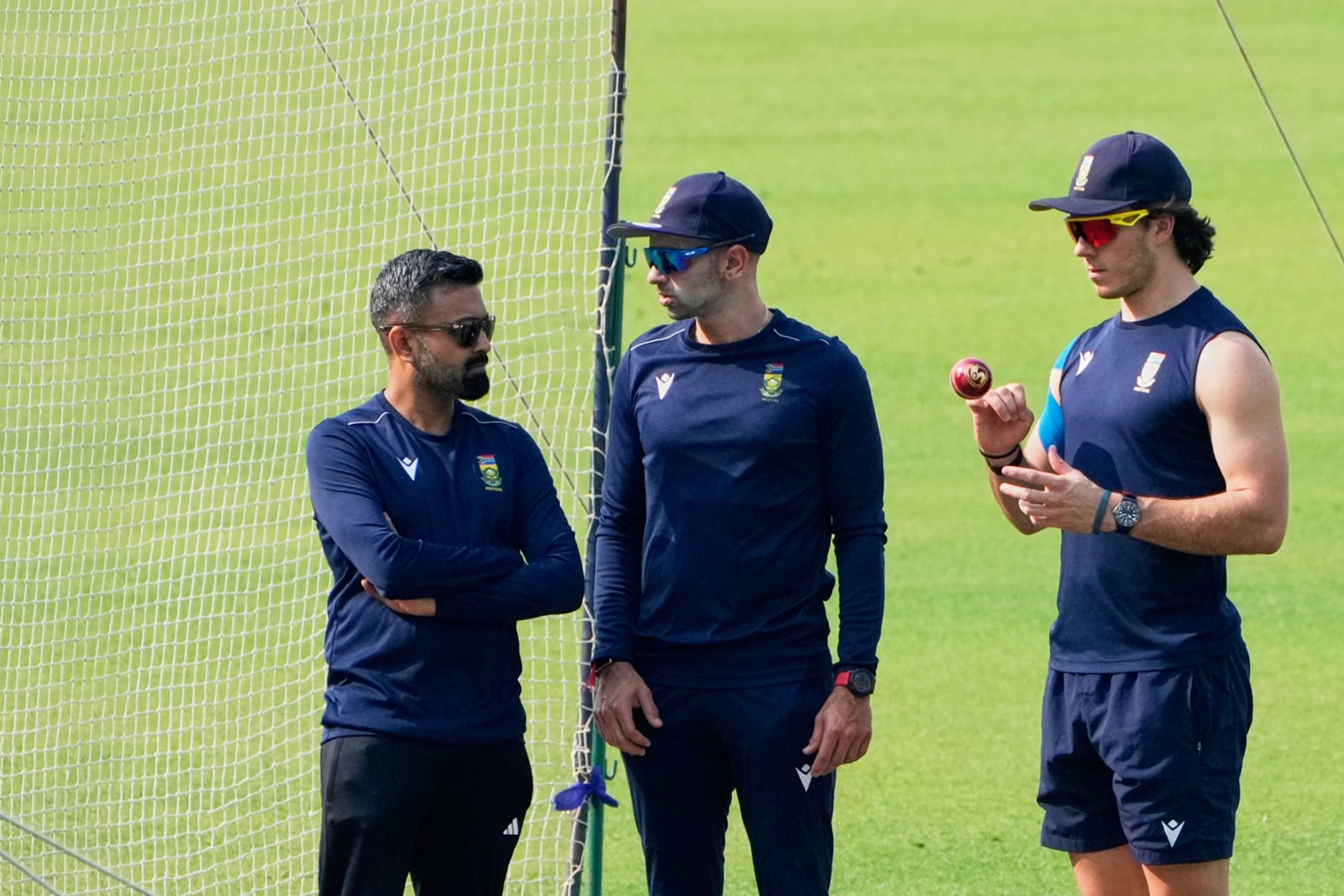ARTICLE AD BOX
Expeditions to the subcontinent seem longer than they actually are for visiting sides. South Africa, on the foothills of their 37-day trek in India, had spent 32 days in Pakistan, by the end of which they were utterly spent.
Usually, the heat hits them first; mercifully, it’s late autumn in the eastern neck of India, where the visitors complete their Test engagements. But the humidity would be draining. Dust and congestion would vex them; gun-toting commandos would flank them, as they were in Pakistan, for coach Shukri Conrad to irritatingly quip: “You come here and all you ever see is armoured vehicles to and from the ground, and you stay in a hotel all day.” Or for batsman Tony de Zorzi to say, sighing: “You have to sleep a bit longer to make your days a bit shorter.”
These are the challenges they would encounter even before they had stepped onto the cricket field. Before the thoroughbred pace pair of Mohammed Siraj and Jasprit Bumrah begin to hum their new-ball duet, before the dexterous spin trio (or quartet or pair) start thrumming their deathly notes, before the 22-yard begins to creak and crack, before batsmen with twinkling feet and Velcro wrists condemn them to day-long ordeals, before hope withers and nerves snap.
A tour of India is the stiffest test for any overseas side, and the most rigorous baptism yet for the World Test champions. If uneasy disclaimers still lurk around their triumph, a series win in India would cleanse half the doubting minds.
Drawing inspiration from NZ
South Africa have reasons to feel unintimidated. They had sufficiently acclimatised to the conditions after the Pakistan trip that ended as recently as November 8th; they drew the Test series 1-1; they have the most potent spin pair ever in their history; if Mitchell Santner and friends could roll over India for a clean-sweep, so could Simon Harmer and Keshav Maharaj against a bunch of batsmen whose ability to combat spin is not as tremendous as their predecessors.

 Dewal Brevis (right) and Kesav Maharaj (centre) talk with a support staff during a practice session ahead of the first Test. (AP Photo)
Dewal Brevis (right) and Kesav Maharaj (centre) talk with a support staff during a practice session ahead of the first Test. (AP Photo)
Speedsters Kagiso Rabada and Marco Jansen have troubled India’s batsmen in the past; two of their serial tormentors have retired (Ravi Ashwin with 46 sticks at 15.73 and Virat Kohli with 517 runs at 64.62); since their readmission they have been the second most successful team in India (after Australia), winning a series and drawing another.
But Temba Bavuma’s troops are not as dynastic or celebrated as some of the previous iterations. Hansie Cronje (the only skipper to win a series in India), Graeme Smith and Hashim Amla had led far more vaunted sides, those that featured some of the modern-day hall-of-famers like Allan Donald and Dale Steyn, Jacques Kallis and AB de Villiers, those that produced both monumental and magical feats. Steyn’s demolition acts in Ahmedabad (2008) and Nagpur (2010); Amla’s double hundred in Nagpur (2010), the Kotla stonewalling (2015).
Story continues below this ad
Few teams have shaken India’s invincibility at home than them–apart from the last two rubbers, the last Test of a series had been a decider. No team has forced drastic tactical shifts as they have–the outright turner trend began with the 2015 series against the Proteas.
Familiarity factor
There are a clutch of familiar names, familiarised by IPL as well as bilateral ties. Aiden Markram, Bavuma, Rabada, Maharaj and Marco Jansen are strikingly famous names in these shores. The IPL tragic would reel out the names of Tristan Stubbs and Ryan Rickleton.
Those who have followed the Test ventures would raise a worrisome brow when the dreadlocked Toni de Zorzi comes to bat. He burst forth on the dint of his white-ball exploits, but has established himself as South Africa’s most stable batsman in Asia.
Wicket-keeper batsman Kyle Verreynne is vastly understated but has the defiant trait of Mark Boucher. Zimbabwe might have been unfortunate victims of Wiaan Mulder’s 367, but he is not merely a weak-attack bully. Rickleton’s Test highest is a pugnacious 259 against Pakistan in Cape Town. Dewald Brevis’s nickname–Baby AB–precedes him. If South Africa is to name the exact eleven as they did in the victorious final Test against Pakistan, they bat as deep as Maharaj, slotted at No. 10.
Story continues below this ad
Bowling, though, remains their biggest strength. India’s batting is still transitioning and with vulnerabilities. The identity of No. 3 remains uncertain. Whether both Dhruv Jurel, whose last five innings yielded three hundreds, and Rishabh Pant both feature in eleven, whether Sai Sudharsan gets another hit to translate his talent to tangible runs and whether seam-bowling all-rounder Nitish Reddy makes way for a spinning all-rounder could be fascinating sub-plots.
Both Maharaj and Simon Harmer, a county cult-hero with exactly 1000 first-class wickets, could reacquaint India’s batsmen with their spin travails of recent vintage. Their reputation could kill the temptation of an outright turner, but both sides have ample explosiveness to wreak havoc on all varieties of surfaces. In a sense, South Africa and India could see a reflection of each other: Both have multi-skilled bowling cartels, a phalanx of all-rounders and batting units without colossuses, thus promising a thrilling series, like those in the late aughts.









 English (US) ·
English (US) ·